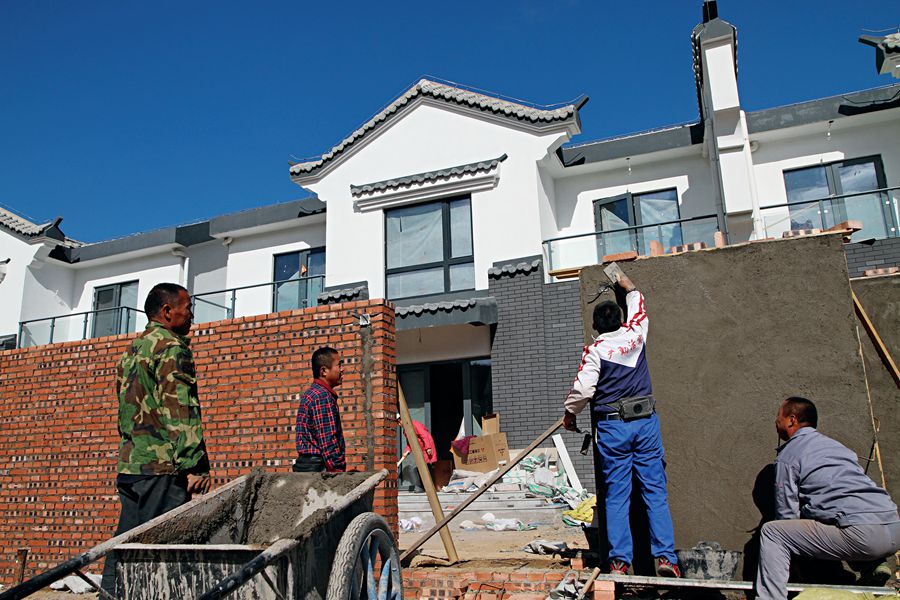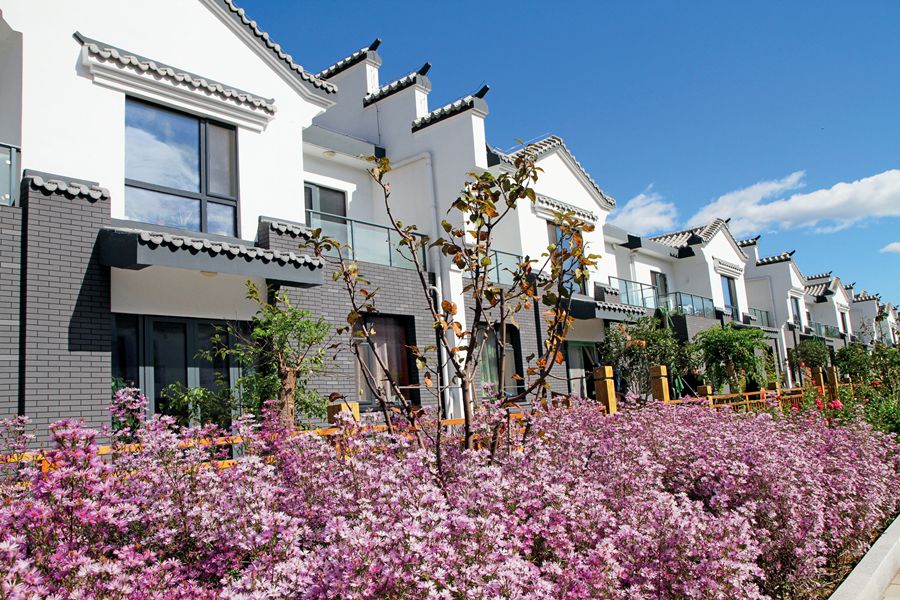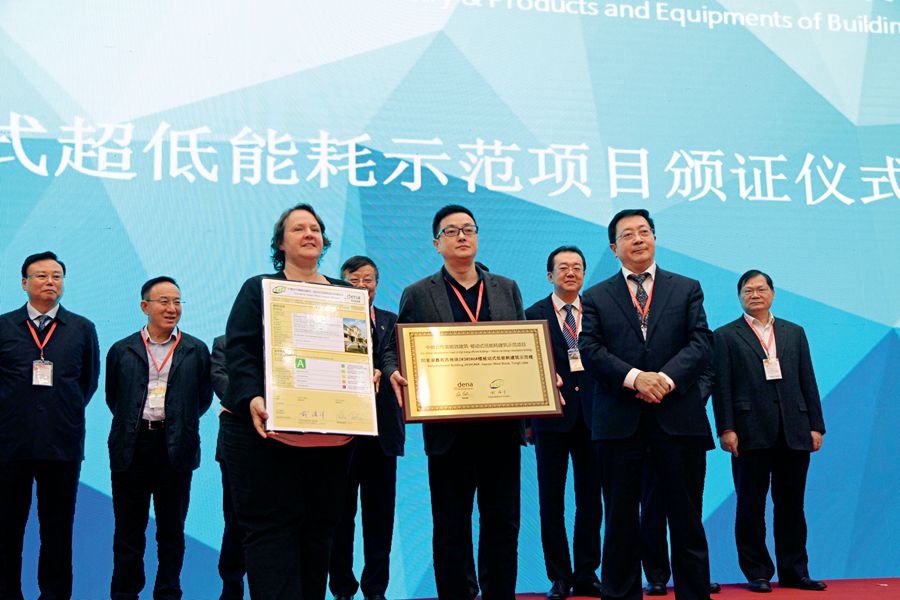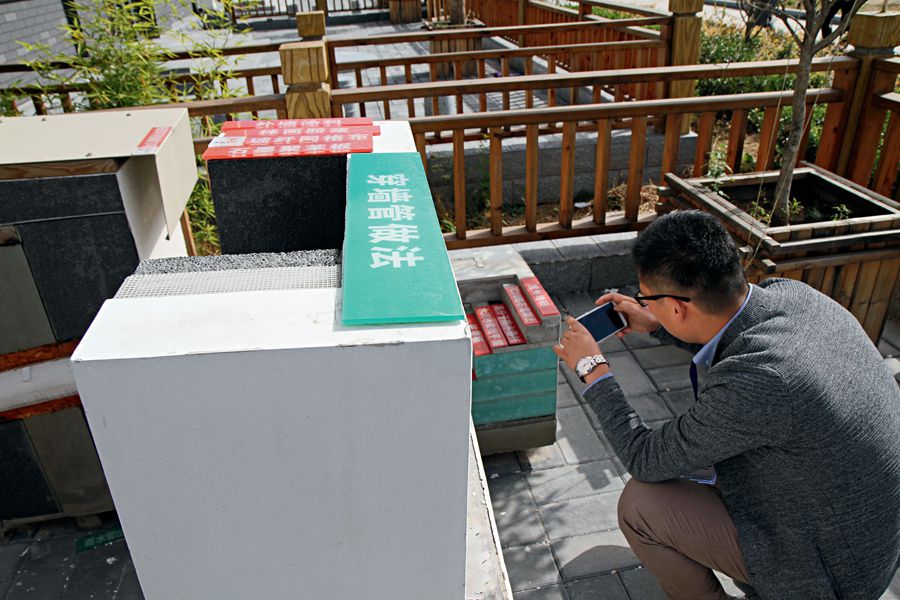AS a German proverb says, “Friendship ends with money.” Well, that can also be applied to other areas of society, for example, environmental protection.
Although green technology is becoming more and more sophisticated worldwide, it still usually is second to none in being expensive! And when it comes to the wallets of companies and consumers, i.e. company profits, purchase prices, and tax burdens, the “friendship” with environmental protection often ends quickly.
In the case of China, the fact that the country is still predominantly dependent on products and know-how from the West in terms of green technology is making the situation more difficult. As for both products and know-how, foreign companies demand high prices, and justifiably so in view of the years of research and development investment which they have contributed to the cause.
This dilemma has also existed for a long time in China’s booming residential construction sector. But it is precisely here that the beginnings of a green turnaround can be witnessed today, and international cooperation is one of the key factors driving this change.

The experience and technical solutions on the passive house from Germany and Europe can be utilized well in northern China due to their similar climatic conditions.
This trend can be seen particularly clearly in the example of passive house technology.
For some years now, the German standard for the construction of energy-saving buildings has continued to gain popularity and attention in China.
The success of passive house technologies illustrates how win-win cooperation between China and the West can be realized, and ultimately how it benefits everyone, not only companies and consumers, but all humans and the environment as well.
The Passive House — a German Model Finds Its Way to China
To better understand the setting of passive house technology, we traveled about 40 minutes by bus to the outskirts of Beijing. Here, far north of the city center, in a seemingly rural area, the first passive house settlement of the Chinese capital was completed in October 2017 – the village is called New Shaling.
It was built with the help of German companies and experts using techno-logy and techniques from Germany.
The former inhabitants of a nearby village, who had previously settled in an area threatened by landslides in the event of heavy rain, had moved into 36 two-storey houses.
“By implementing the project, we have not only successfully relocated the people from this danger zone, but also greatly reduced the energy consumption and consequently the annual fixed costs of the villagers,” says Zhang Xiao-ling, senior engineer and director of the Beijing Kang-Ju Certification Center of the Center of Science and Technology & Industrialization Development, who carried out the project.

These houses in the village of New Shaling just outside Beijing have been built with the participation of German companies and experts.
The world’s first passive house was built in 1991 in the German city of Darmstadt. So-called passive houses are, in reality, not as one might think, a new construction method, but rather a new standard that places special demands on the architecture, the technology used, and ecology-friendliness. Even old houses can be converted into passive houses through appropriate reconstruction and renovation.
The special feature of these buildings is that the majority of the demand for heating is covered by “passive” energy sources such as solar radiation or radiated heat from people and technical equipment in the house.
The result is a positive room perception, coupled with extremely low energy consumption and thus low energy costs.
North-South Divide in Green Building Technology
New Shaling may be Beijing’s first passive house settlement, but passive houses are no longer a novelty in China, as Nicole Pillen, deputy head of the Division Energy-Efficient Buildings and director of the Department of International Cooperation at the German Energy Agency, explained to us.
Pillen has travelled to Beijing to participate in the 17th China International Exposition of Housing Industry & Products and Equipment of Building Industrialization (CIEHI) taking place from October 11 to 13, 2018.

Nicole Pillen from the German Energy Agency at the 17th China International Exposition of Housing Industry & Products and Equipment of Building Industrialization (CIEHI) in Beijing in October 2018.
She says, “Ten years ago, the Chinese side sought to cooperate with us for the first time, particularly in the area of highly efficient buildings, an area in which Germany has accumulated a lot of experience due to the course of the energy transition in the building sector over the last 20 years.”
“We then agreed to try out passive house technology by launching pilot projects in China and introducing an ambitious efficiency house standard. As a result, the successful examples have ultimately led to this technology becoming very widespread in China and the term ‘passive house’ was on everyone’s lips.”
In northern China, for example in the Beijing-Hebei region, the experience and technical solutions of Germany and Europe can be transferred virtually one-to-one due to similar climatic conditions.
However, when applying the technology in other Chinese climate zones, such as southern China with its humid and hot summers, cooperation with experienced Chinese colleagues is required, says Pillen.
“Here we lack experience in the field of energy-efficient construction in Europe. German engineers can surely offer their help here, but the decisive impetus must come from the Chinese side in the end,” he added.
The fact that there is definitely a strong will on the Chinese side is demonstrated by the considerable progress that German and Chinese engineers have made together in recent years in introducing the passive house technology to other climate zones in China.
Under the auspices of the Passive House Institute Darmstadt, which officially certifies technology that meets the passive house standard, studies were conducted in nine Chinese cities in five different climate zones, including the southern metropolises of Shanghai and Guangzhou.
“We were able to prove that passive houses can be built in various climate zones,” Chen Shoukong, the China representative of the Passive House Institute Darmstadt, summarized the results of the study.
Chen emphasizes that the successful application of passive house technology, especially in southern China, is a great opportunity to advance green urban development in the future.
“In Shanghai, a great deal of electricity is still used for heating in winter, a practice which is very expensive. Then in the summer, there are high energy costs when there is great heat and high humidity and the rooms are cooled by air-conditioning systems,” says Chen.
“All this can be easily regulated using passive house technology. Thus, in the future, we hope that we will be able to convince more people in southern China to apply this environmentally friendly construction method.”
Competition Stimulates Business
Many products for passive houses built in China are either imported or produced locally in China by foreign manufacturers in cooperation with Chinese partners. Thus, in the early years, foreign companies dominated the business.

Good thermal insulation is the be-all and end-all: The Passive House Institute Darmstadt found out in a study that the passive house standard is applicable in various climate zones.
However, according to Chen, in the meantime, more and more Chinese companies have gotten their products certified according to the passive house standard at Passive House Institute Darmstadt. He himself explicitly welcomes this development, as he stresses in the following lines.
“Experience has shown that the fierce competition in the Chinese market ensures that prices will fall quickly, which is ultimately a good thing. This in turn makes passive houses cheaper and more widespread. Only when passive house technology is widely used will there be a corresponding positive impact on our environment.”
Nicole Pillen also believes that the growing number of Chinese competitors in green building technology will not be a threat to German companies enjoying a part in the growing market in the future.
“It is true that there are now more Chinese companies catching up qualitatively and competing with European suppliers, but at the same time, there is also a much greater demand today than there was just a few years ago,” Pillen says.
Joint Green Development Brings Opportunity
Pillen cannot agree with the concerns in the West about extensive copying of know-how, when it comes to green urban development.
She says, “In the building sector, know-how cannot simply be copied. Architects, planners, and builders on the construction site have to gain their knowledge through many years of experience and hard work. It was not for nothing that it took us 10 years to get to where we are today in the passive house sector in China.”
German company representatives who travelled to Beijing for the 2018 CIEHI (China International Exhibition on Housing) also agree with Pillen on this point. Liu Bin, chief representative of the China business of the leading German window and door manufacturer UNILUX and general manager of the German foil manufacturer Bosig – both companies selling products that meet the passive house standard – says, “As a company, we are of course always concerned about protecting our technology and know-how, but we are not afraid of Chinese competition because we are convinced of the quality of our products.”
For UNILUX and Bosig, he believes that the growing field of green building technology in China is rather a great opportunity.
Andreas Lehmann, director of Lunos Lüftungstechnik GmbH, which among other things, offers indoor air systems for passive houses, also underlines the great potential of the Chinese market.
“I can understand the concerns of foreign companies about protecting their know-how, but we ourselves have not had any bad experiences here in China so far,” he said on the sidelines of the trade fair.
Future Prospects
For the upcoming years, Lehmann and his company expect to see positive developments in the German-Chinese business cooperation in the field of environmentally friendly building technology.
“The Chinese market will become a dramatically important one in the coming decades. With the added value that comes from Germany alone, our company is not sustainable at all with its business model. In Germany we are already at the limit of our production resources. Franchises and partnerships with Chinese companies are therefore important in order to produce for the Chinese market locally with the available capacities here,” says the German.
Nicole Pillen adds that the Chinese market is already so advanced that German companies based in China can take a piece of innovative power back home.
“By now, China has a large number of promising start-ups in the entire field of energy system transformation, showing what can be achieved in this area. There is a lot we Germans can learn here,” she says.
In this respect, too, according to Pillen there are many opportunities for Sino-German cooperation with perspectives that will extend into the years to come.
Last but not least, the Chinese government is also helping to promote green development in the country by setting an appropriate course.
The construction of the environmentally friendly passive house settlement on the outskirts of Beijing, for example, was supported by government subsidies.
In addition, Beijing has already given the green light to the construction of new passive house facilities with a total area of 500,000 square meters in the coming years, including office buildings and high-rise buildings as well as social housing, kindergartens, and schools.
There are also plans to continue upgrading existing buildings to the passive house standard.
Green urban development in China is therefore likely to gain further momentum in the coming years, and shall be made possible to some extent by German-Chinese cooperation.



